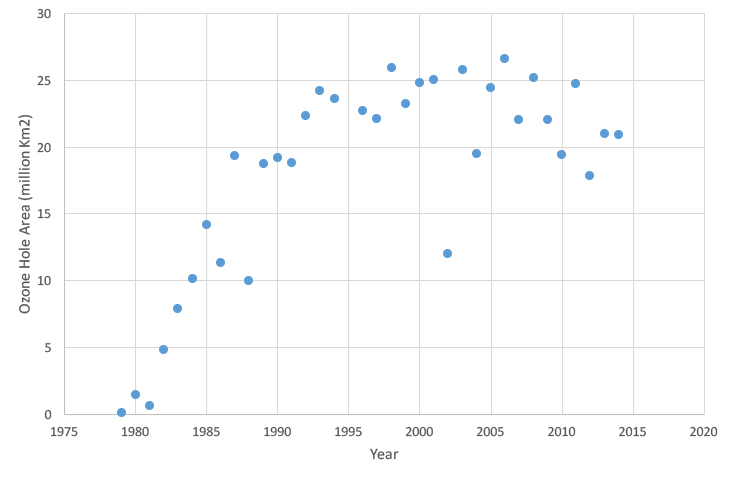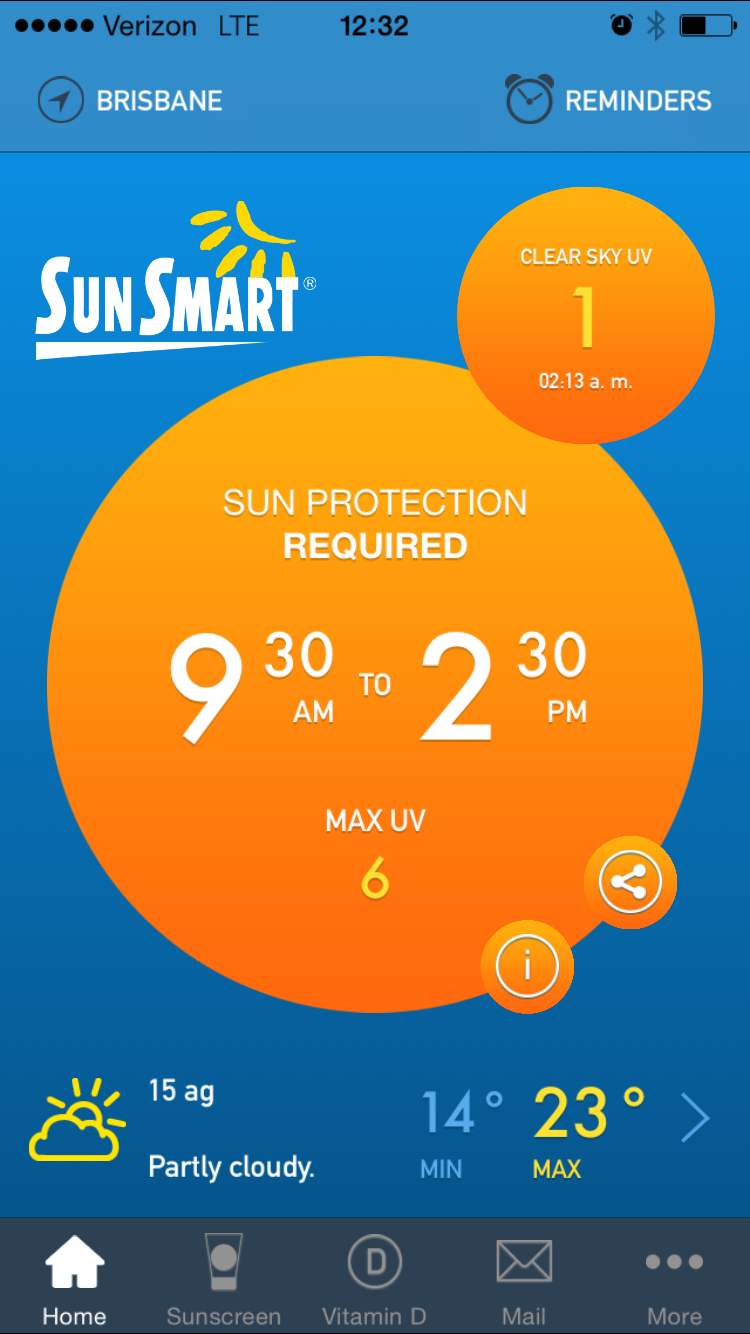

by John Staton
Dermatest, Pty, LLC
The question of the impact of changes to climate is relevant to the consideration of appropriate sun protection. Will we need to have more effective sunscreens into the future, or perhaps need to modify the mix of actives?
Ozone
Concerns over the expansion of the “Ozone Hole” first arose in the mid 1970s.1 Recent Southern Hemisphere data from NASA is compiled as maximum ozone hole area, column ozone minima, and daily ozone deficit comparative to 1980. All of these indices indicate a turn around and trend towards improvement at this point in time (See Figure 1).2 However, some researchers have cautioned that the heating of the planet may suppress this improvement.3

Figure 1: Arctic ozone deficit. Data from the NASA Ozone Hole Watch project.
Global Warming
Global warming is considered one of the major threats to civilisation. According to the Commonwealth Scientific and Industrial Research Organisation (CSIRO), mean temperatures within Australia are projected to rise by 0.6 to 1.5 °C by 2030.2 Sun seeking behaviour is probably the main concern for consumers. Studies, such as that conducted by the Cancer Council Centre for Behavioural Research, have shown that consumers tend to spend more time in the sun when the weather is warmer.4
Ultraviolet Index
The Ultraviolet Index is the most often used tool for consumers to access in relation to information regarding ambient sunlight conditions. Not only is it available in newspapers, television weather reports, and websites, where it is documented daily, but access to real-time updates is now available both on Cancer Council and AR-PANSA websites, and even downloadable as an application.5

Figure 2: Screen shot of the Sunsmart application.
So far, there does not appear to be any evidence to suggest that global warming will have an impact on UV intensity as measured by the Ultraviolet Index. It is possible that additional cloud cover may occur, which could suppress UV intensity, while at the same time warming by the greenhouse effect. This effect will vary from region to region in the world.6
Geographic Location
Geographic location will probably remain the largest influence on the dose of UV light received. Perhaps, more important than geographic location is a question of geographic relocation, since the ability to relocate has become much easier with modern transportation. This issue has come to more prominence due to the current debate around vitamin D deficiency. Many individuals of African origin—with darker skin that is more protected from UV light—have moved to Northern Europe and other climates with lower UV light levels, while Europeans (with lightly pigmented skin) have migrated to high UV environments such as Australia. The end point is that the migratory Europeans have increased their skin cancer risk, while Africans migrating from Africa to Europe have increased their likelihood of vitamin D deficiency.
References
1. Twenty Questions and Answers About the Ozone Layer: 2014 Update, World Meteorological Organization Global Ozone Research and Monitoring Project – Report No. 55 (2014).
2. Commonwealth Scientific and Industrial Research Organisation, Bureau of Meteorology, State of the Climate, Clayton South, Australia (2012).
3. J. Makin, Implications of climate change for skin cancer prevention in Australia, Health Promot. J. Austr., 22, S39-S41 (2011).
4. L. Lemus-Deschamps and J.K. Makin, Fifty years of changes in UV Index and implications for skin cancer in Australia, Int. J. Biometeorol., 56, 727-735 (2012).
5. http://www.sunsmart.com.au/tools/interactive-tools/free-sunsmart-app.
6. International Satellite Cloud Climatology Project.
This article originally appeared in the Dermatest Newsletter, June 2016.